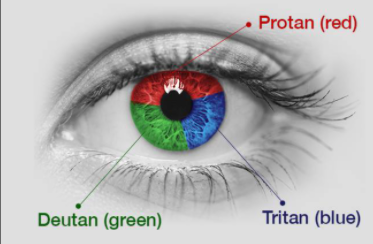
Color blindness is a disorder in which person loses its ability to see the following three colors: Red, Blue or Green or mixture between both.
Causes and risk factors of color blindness:
Genetic factor is one of the main causes of color blindness (Inherited Color blindness) which means that the patient is born with it.
Generally, human eyes have three types of cones (photoreceptors in the retina), each of which can respond to only one of the following three colors: Red, Blue and Green.
Humans can see different colors when photoreceptors, inside the eye, detect different levels of the three mentioned colors (Red, Blue, and Green). Most of cones present at the macule, central part of the retina.
Treatment of Color Blindness:
Treating or correcting of acquired color blindness can be treated by treatment of the cause.
For example, if the cause was cataract, it can be removed by surgical procedure to restore the ability to see colors again.
Surgical treatment can improve the ability to recognize certain colors, and if the problem was a side effect of some medications, it can be treated by cessation of this drug.
Patient with color blindness can compensate by the following steps:
- Using contact lenses or special glasses can help recognizing different colors; however, these special lenses don't guarantee natural color vision as it may distort the image of certain objects.
- Using contact lenses or special glasses that prevent glare (using side shields or blank shields) may help people with color blindness a lot, and may enable them to differentiate between colors, by inhibition of glare and minimizing the radiation as people with color blindness can better distinguish between colors when the surrounding light is not strong.

